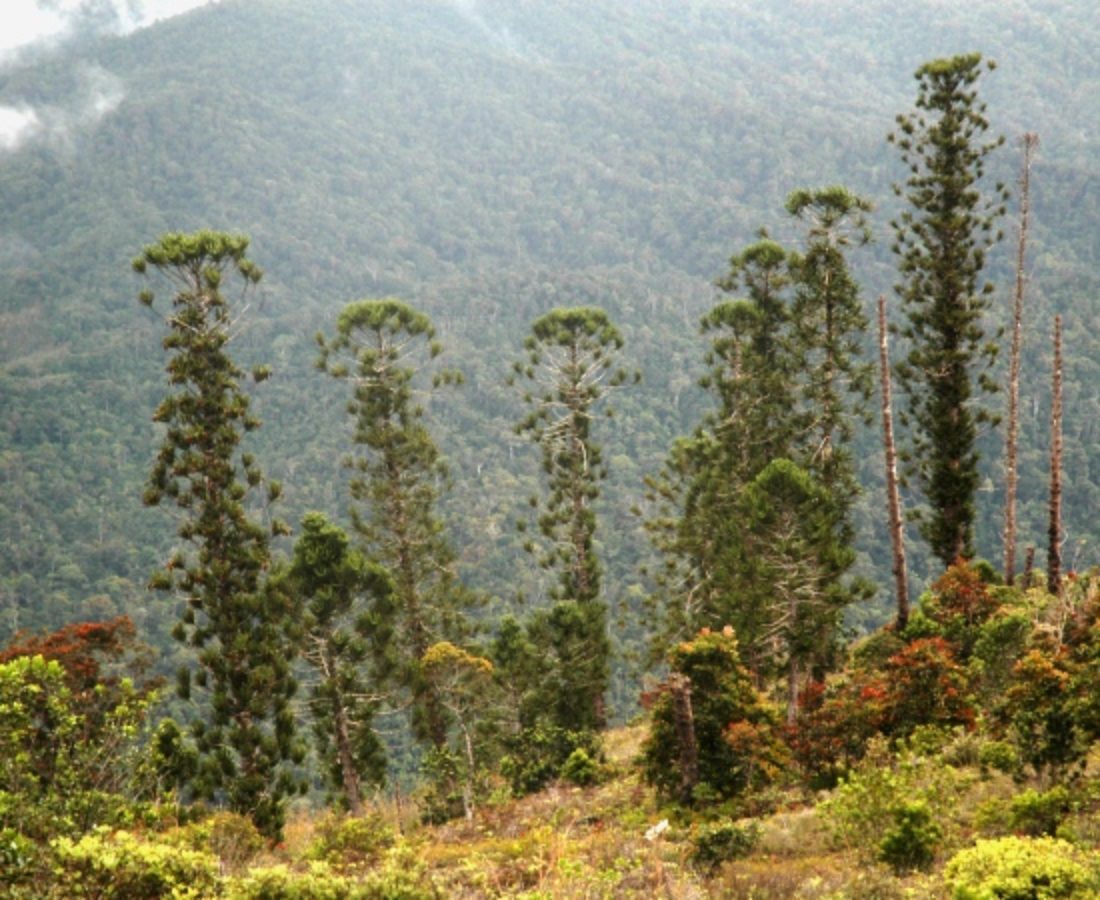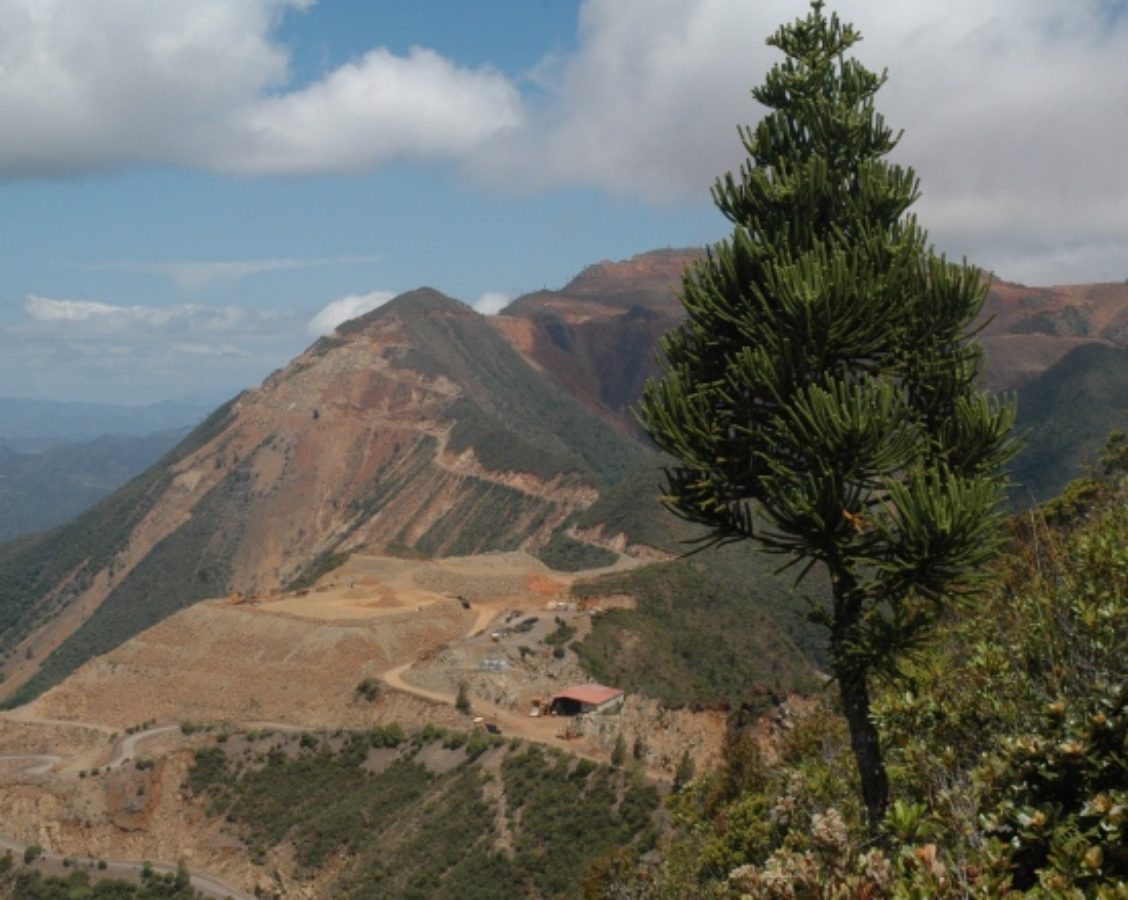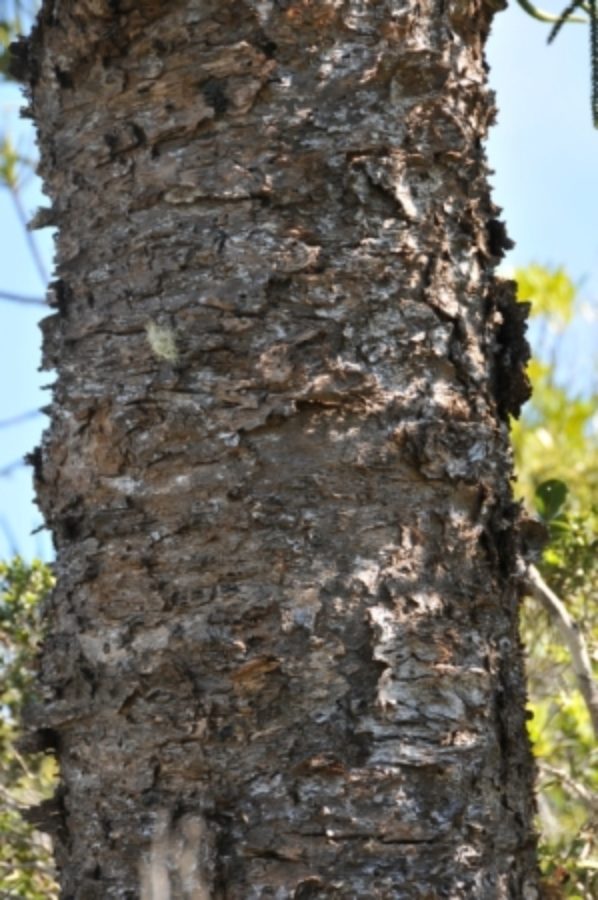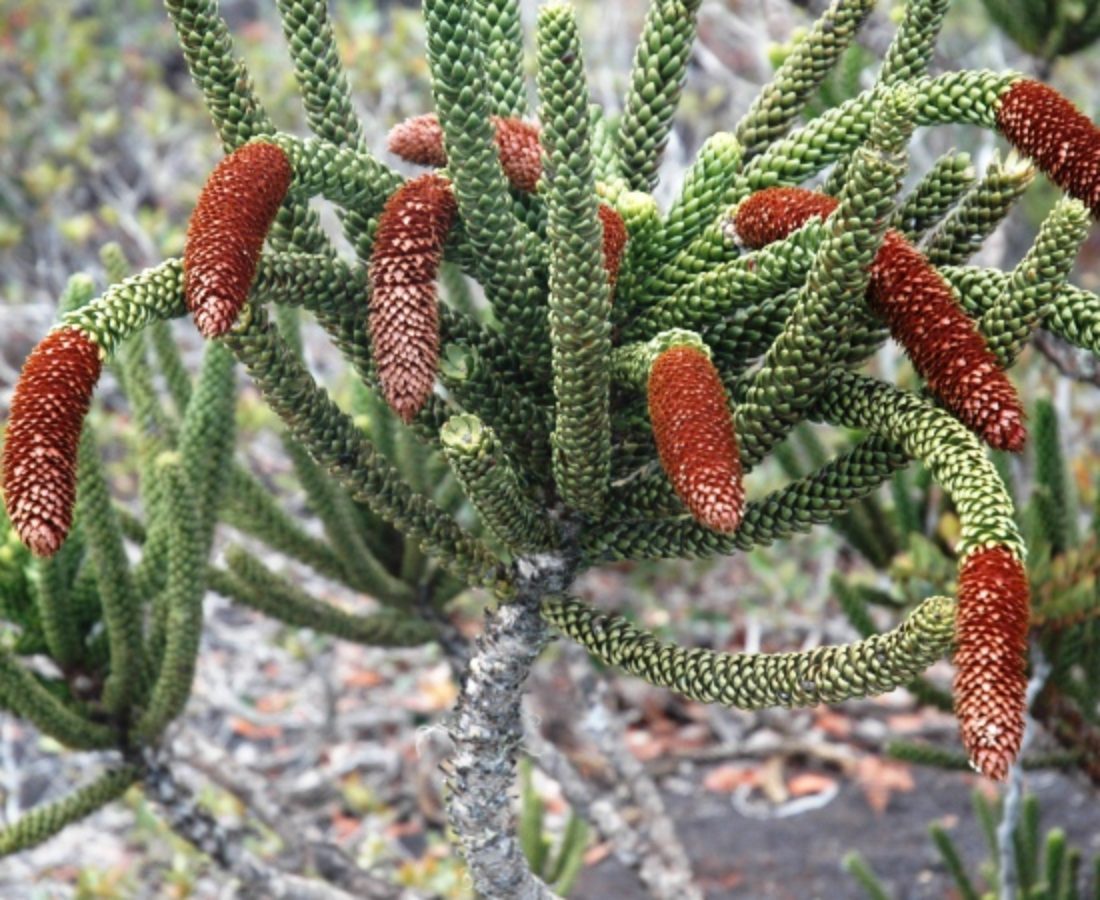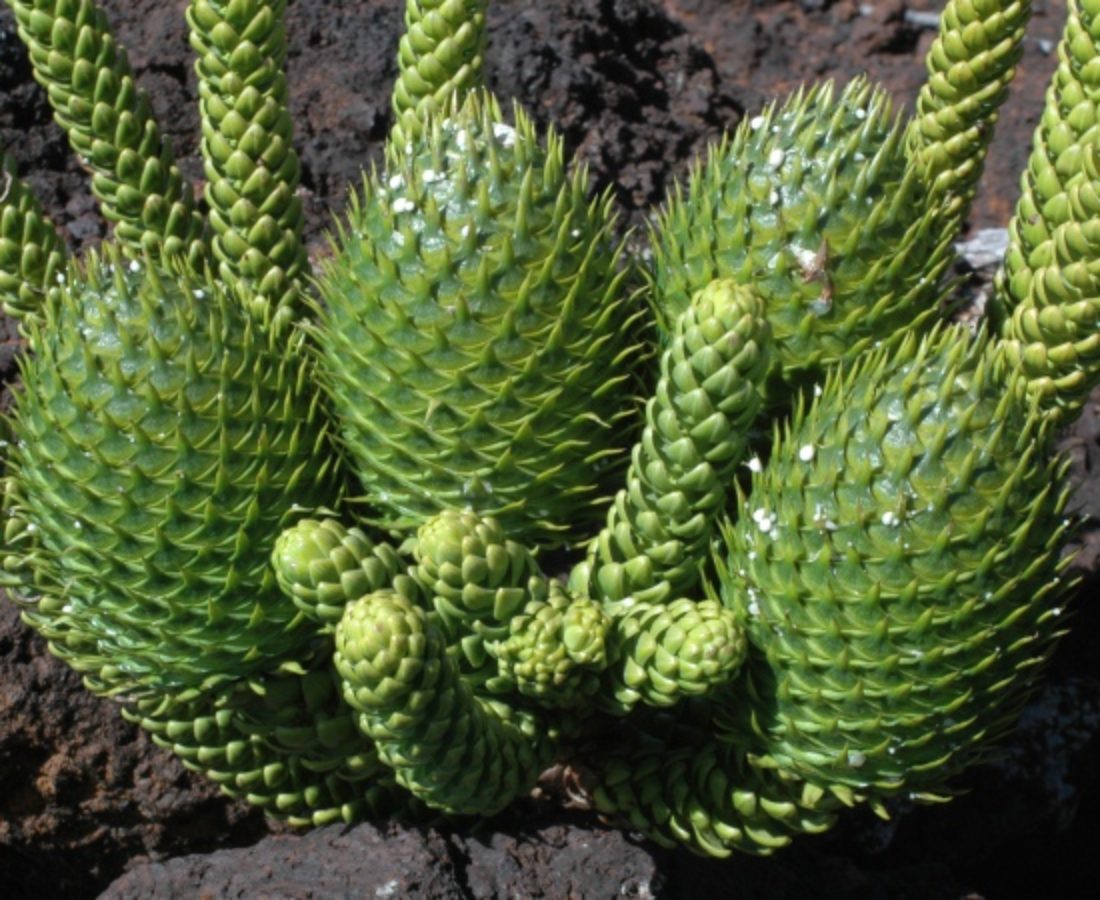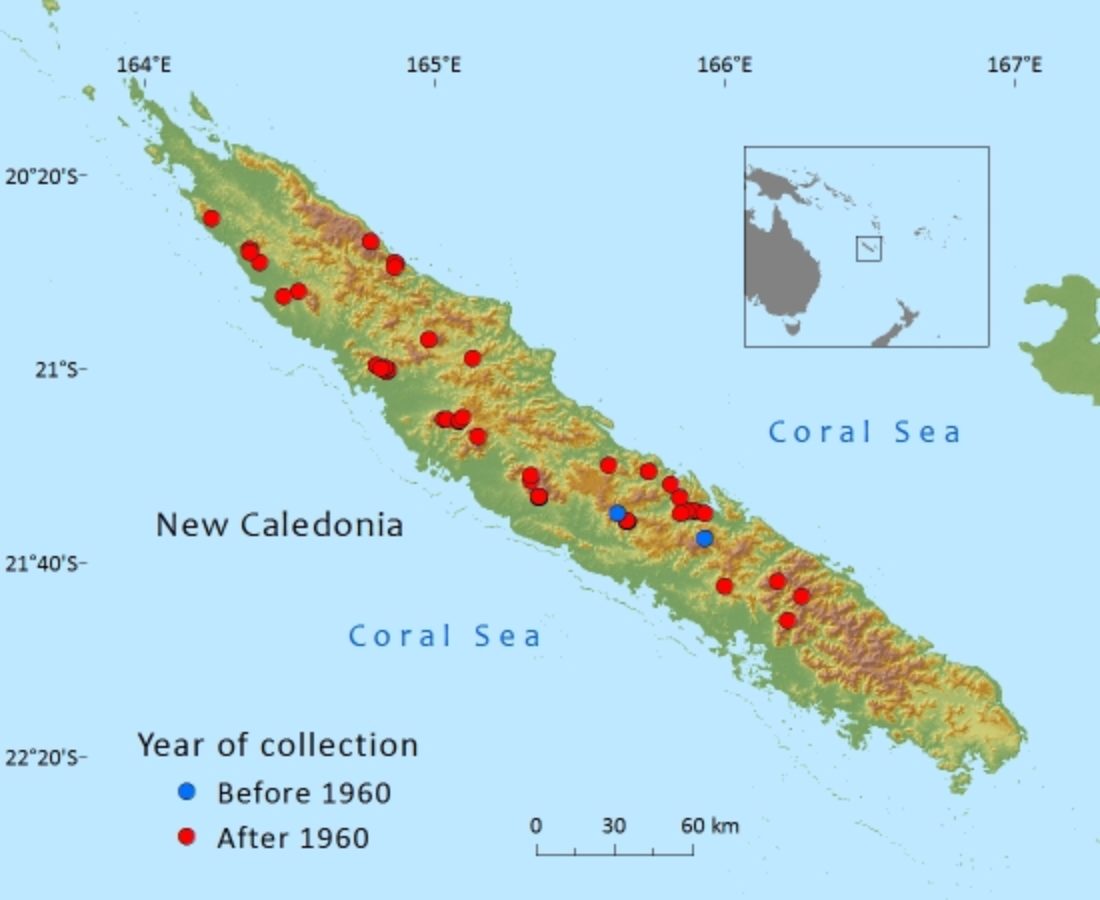Araucariaceae
Araucaria montana
One of 13 species of Araucaria endemic to New Caledonia where it occurs on the main island of Grande Terre and although widespread is under considerable threat from mining and fire.
Description
Habit
A monoecious tree up to 40m tall, with a d.b.h. up to 1m when mature. Pyramidal when young and developing a very distinct open, candelabriform crown with a clear bole as it matures. Bark thick, light grey and often peeling in horizontal plates.
Foliage
Adult leaves 1–2.5 x 1–2cm, lanceolate to ovate with an acute apex; stomata in bands at the base and apex of the leaf along the upper surface of leaf. Foliage usually clustered on small branches at the end of primary branches.
Cones
Female seed-cones up to 12cm long, terminal, borne on very short branches; bracts with prominent tips to 1cm; maturing January and February. Male pollen-cones 8–25cm long, terminal, maturing July to August.
Key Characters
A. montana can be confused with A. laubenfelsii, however, the different stomatal patterns on the upper leaf surface (seen through a hand lens) can be used to distinguish them. In A.montana they are only present at the base and apex of the leaf and are not organised in bands, whereas in A. laubenfelsii they are in intermittent rows organised into bands of 3–5 rows each and most of the rows extend throughout the length of the leaf, or at least from the base to the middle.
References and further reading
- de Laubenfels, D. J. (1972). Gymnospermes. In: Aubréville, A. & Leroy, J.-F. (eds.), Flore de la Nouvelle-Calédonie et Dépendances, 4. Paris: Muséum National d’Histoire Naturelle. 167 p.
- Gaudeul, M., Rouhan, G., Gardner, M.F. & Hollingsworth, P.M. (2012). AFLP markers provide insights into the evolutionary relationships and diversification of New Caledonian Araucaria species (Araucariaceae). American journal of Botany 99(1):68-81.
- Jaffré, T., Bouchet, P. & Veillon, J.–M. (1998). Threatened plants of New Caledonia: Is the system of protected areas adequate? Biodiversity & Conservation 7(1): 36.
- Jaffré, T., Munzinger, J. & Lowry, P.P. (2010). Threats to the conifer species found on New Caledonia's ultramafic massifs and proposals for urgently needed measures to improve their protection. Biodiversity and Conservation: 19(5):1485-1502.
- L'Huillier, L. Jaffré & Wulff A. (2010). Mines et environnement en Nouvelle-Calédonie : les milieux sur substrats ultramafiques et leur restauration. Editions IAC, Nouméa, Nouvelle-Calédonie, 412 p.
- Manauté, J., Jaffré, T., Veillon, J.-M. & Kranitz, M. (2003). Revue des Araucariaceae de Nouvelle-Calédonie. IRD, Nouméa.
- Nasi, R. (1982). Essai pour une meilleure connaissance et une meilleure comprehension des Araucariacées dans la végétation Calédonienne. Nouméa: École Nationale des Ingénieurs des Travaux des Eaux et Forêts, Centre Technique Forestier Tropical. 134 p., 10 plates, 44 p. appendices.
- Thomas, P. (2010). Araucaria montana. In: IUCN 2012. IUCN Red List of Threatened Species. Version 2012.1. www.iucnredlist.org. Downloaded on 29 June 2012.
